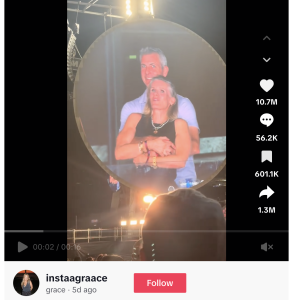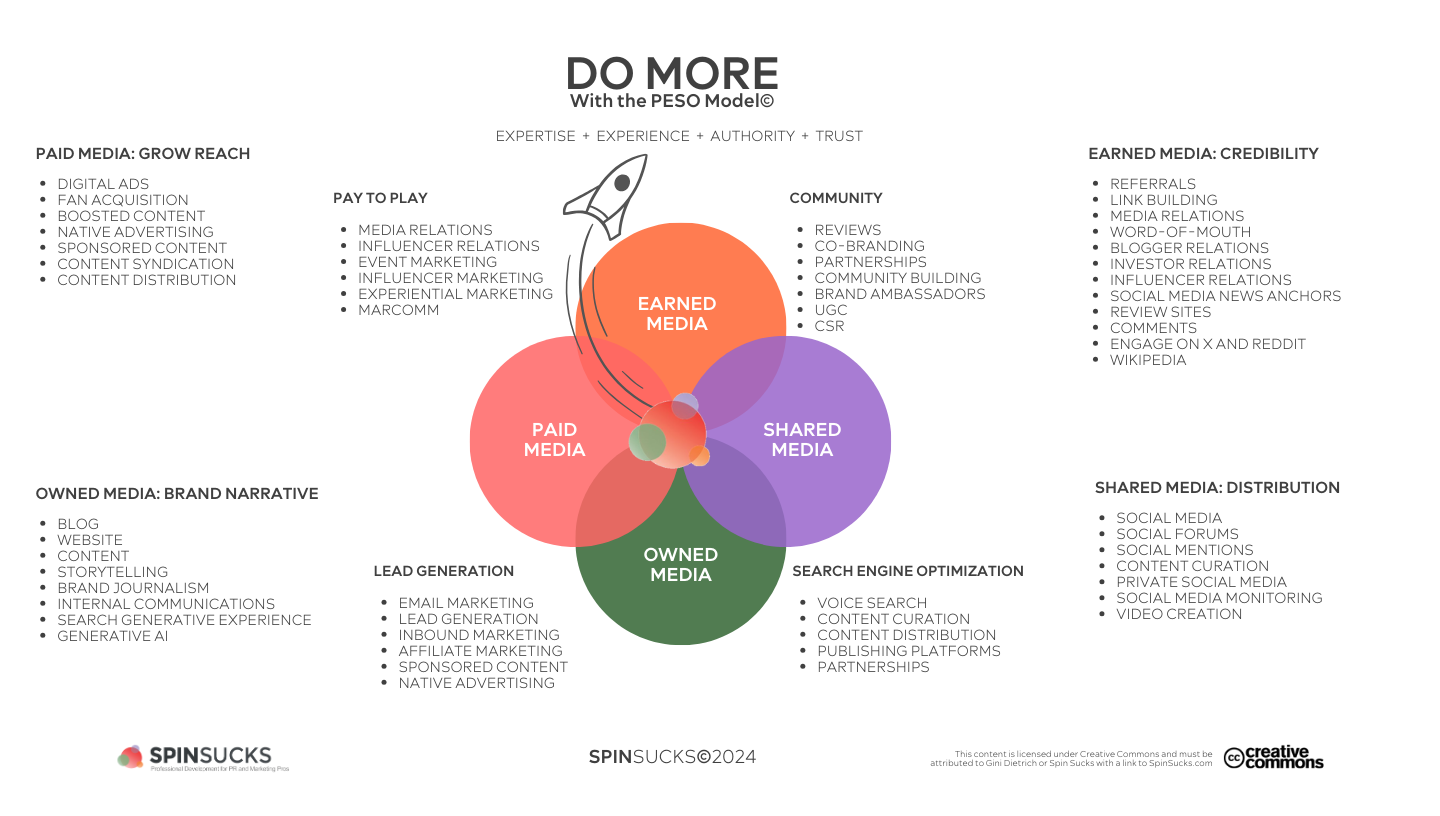16 Public Relations
By Dave Bostwick
Although I earned my bachelor’s degree in journalism, I took several courses about public relations along the way. So when I first graduated from college, I applied for a few PR positions.
I got an immediate call for one of those PR jobs and went to an on-site job interview the next day. I was disappointed to see that this job involved sitting in a cubicle, along with approximately 20 other telemarketers, making unsolicited sales calls. This call-center work didn’t align with the engaging lessons I learned about PR in my college classes.
Fortunately, PR professionals today are held in much higher esteem, but the term “public relations” can still seem squishy or broad.
What does public relations really mean? How do we identify authentic PR jobs that require professional skills?
Here’s how the Public Relations Society of America defines the profession:
Public relations is a strategic communication process that builds mutually beneficial relationships between organizations and their publics.
The call-center position that I interviewed for didn’t fit that definition, mainly because making cold calls no doubt annoyed most people who picked up their old-fashioned phones in the days before caller ID. Also, there was no long-term strategy to build mutually beneficial relationships. The goal was for the company to make money as quickly as possible.
In this chapter, you’ll focus on the growing realm of professional public relations and examine a few brief case studies. You’ll also examine ways that public relations is distinct from advertising.
YOUR MEDIA LANDSCAPE
How would you define and explain public relations to a 12-year-old? What’s an example you would include?
(No fair using a web search or AI text generator for your response.)
LOTS TO DO
Public relations can be a rewarding career because of its complexity and variety. The following presentation shows the broad range of professional PR activities.
Study the following presentation slides by using the forward button or clicking on sections of the control bar. To enlarge any interactive presentation in this book, click on the lower-right full-screen option (arrows).
It may be helpful to make a distinction between public relations and advertising.
A PR campaign attempts to increase audience awareness or strengthen people’s attitudes about a client – such as a public figure, a company or an organization – often by securing favorable media publicity. However, PR professionals sometimes can’t control that narrative.
For example, a PR office can send a news release to a local television station and hope for some positive (and free) publicity IF the station’s journalists decide to cover information from the news release. However, the PR office has minimal control over how the TV station frames its coverage.
On the other hand, advertising typically involves buying media space or time to publicize products or services. Unlike the example of the PR news release in the previous paragraph, if an organization buys a television or social media advertisement, the organization controls the content of the initial ad.
The effectiveness of an ad campaign often can be measured by increased sales, name recognition or visibility, while it is more difficult to measure the effectiveness of a PR campaign.
POSITIVE VIBES
Here’s an example of a PR campaign that generated publicity and positive vibes for a company, even though it wasn’t directly connected to company sales or revenue. In 2023, Airbnb committed to provide short-term housing for thousands of Ukrainian refugees. The good-will gesture garnered publicity and eventually gave Airbnb co-founder Joe Gebbia an interview with ABC News.
As an additional example from Northwest Arkansas, after tornadoes caused extensive damage in June 2024, Tyson Foods Inc. distributed 21,000 free meals to area residents in need. The initiative involved a partnership with Walmart, and it generated positive publicity for both companies.
PUBLICS (plural)
The PRSA definition of public relations uses the plural noun publics instead of the singular public. PR professionals craft targeted messages to multiple groups and often have different goals and strategies for effectively communicating with each group.
As an example, the interactive presentation below examines the various publics that a university PR staff might target in its communication plans.
A GOOD EXAMPLE
A couple of decades from now, when people debate the most culturally important music of the 2020s, maybe someone could mention the U.S. Consumer Product Safety Commission. The commission dropped an album titled We’re Safety Now Haven’t We. Besides emphasizing safer habits for a teenage target audience, the album generated lots of positive publicity from media outlets such as NPR.
Here’s a lyrical sample from the chorus of the opening song, which advocates wearing a helmet while riding a bike.
When you’re in these streets,
Take caution.
Protect your neck and your noggin.
Listeners are free to download, remix and reuse songs from the album, including on social media.
And if you didn’t catch those lyrics, here’s a condensed text version.
I’m classifying this as a good example because it shows how an organization can creatively reach a target audience in an informational campaign. However, PR staffers from governmental agencies often need to be prepared for public criticism about inappropriate use of taxpayer funding.
A BAD EXAMPLE
Conversely, here’s an example of a PR message that did more harm than good.
In February of 2023, Vanderbilt’s Peabody College’s Office of Equity, Diversity and Inclusion released a statement intended to show support for the campus community at Michigan State University, where a gunman had killed three students. The statement was sent via email to Vanderbilt students and included this call to action:
In the wake of the Michigan shootings, let us come together as a community to reaffirm our commitment to caring for one another and promoting a culture of inclusivity on our campus. By doing so, we can honor the victims of this tragedy and work towards a safer, more compassionate future for all.
One problem: The statement was generated by ChatGPT, which angered many students who received the email. One student gave the following quote to The Vanderbilt Hustler student newspaper.
“There is a sick and twisted irony to making a computer write your message about community and togetherness because you can’t be bothered to reflect on it yourself.”
Another student provided this critique:
“It’s hard to take a message seriously when I know that the sender didn’t even take the time to put their genuine thoughts and feelings into words.”
AN OLDIE BUT A GOODIE
I’ll close the chapter with one of my all-time favorite examples of a company’s PR efforts turning bad publicity into good publicity. It was also one of the first PR case studies that show the power of the internet and social media to create headaches for large companies that don’t pay close enough attention to customer service.
Canadian musician Dave Carroll was upset with United Airlines. He said that one of his prized guitars had been badly damaged during a flight from Nova Scotia to Nebraska. He was most frustrated with the lack of help he received from United’s customer service.
After repeated failures to get people from United Airlines to listen to his problem, Carroll turned to YouTube. He wrote a song and then created and posted an accompanying video in 2009. You can still watch his work on YouTube.
Soon, United Airlines was facing a PR crisis. Carroll’s video, made with a budget of only $150 and volunteer help from others who sympathized with his plight, collected a million YouTube views in four days and became a topic of discussion on national talk and news shows.
United Airlines publicly fixed the problem by offering Carroll $1,200 in flight vouchers and $1,200 in cash.
Carroll later summarized the significance of his song as a PR case study:
‘United Breaks Guitars’ was an early sign that in this new digital world, one customer can affect the profitability of the world’s biggest brands on a budget of, in my case, $150. Companies now are listening much more closely than they ever did before, consumers are feeling more empowered and every customer can have a voice … even if he or she can’t sing.
You can contrast United Airlines’ approach with a more recent response to a customer complaint at AirCanada. In that case, an AirCanada customer used AirCanada’s support chatbot to get information about the airline’s bereavement discount policy.
The chatbot gave him erroneous guidance about the steps required to get a partial refund. Due to the chatbot’s bad advice, the customer ended up having to pay full price with no refund. The customer eventually filed a lawsuit.
AirCanada representatives argued that the company’s chatbot was “a separate legal entity that is responsible for its own actions.” However, the court ruled that because the chatbot was part of a company website, AirCanada was responsible for giving the customer a partial refund due to the chatbot’s mistake.
Additionally, AirCanada collected a lot of negative publicity along the way.
COLDPLAYGATE

A high-profile example of crisis PR is the Coldplaygate incident in 2025, when a kiss-cam briefly showed a company CEO embracing a female co-worker who was not his wife. The two were startled and immediately sought to avoid being shown on camera. Their reaction led to thousands of social media memes and public embarrassment for the now-former CEO’s company, Astronomer.
Astronomer responded through subtle humor in the video ad below featuring Gwyneth Paltrow, the ex-wife of Coldplay singer Chris Martin.
THE TIMING OF NEGATIVE NEWS

As a more recent example of crisis communications, rock musician Dave Grohl made a public statement about becoming the father of a daughter outside his marriage. One PR executive praised Grohl’s admission as being clean, smart and simple, especially because it came before any media outlets had reported on the child’s birth.
Grohl’s statement was published in September 2024 on the same day as a presidential debate, perhaps making it less likely to gain widespread attention. You can read more here:
- A Rock Star’s Mystery Baby Offers a Lesson in Crisis Communication – The New York Times
Beyond crisis communications, a New York Times article about AI data harvesting explained how Google employees updated the company’s privacy policy in 2024, making a broader range of user data available to train Google’s AI products. The article included details about strategic public notification to minimize negative feedback.
The team was told specifically to release the new terms on the Fourth of July weekend, when people were typically focused on the holiday, the employees said. The revised policy debuted on July 1, at the start of the long weekend.
SPIN SUCKS
If you are planning a career related to public relations, you may be interested in the work of Gini Dietrich. She wrote an influential book titled Spin Sucks and introduced the PESO Model for public relations.
Spin Sucks emphasizes the need for honest, open communications within public relations. The model, shown below, illustrates four intersecting facets of modern public relations.

REVIEW QUESTIONS
The following questions highlight a few tidbits of information from the chapter. Use the forward button to advance through the questions.
PR CONSIDERATIONS
If you are a student who is planning a career in advertising and public relations, you likely will receive much more thorough guidance about crisis/image management in future coursework. In this assignment, the following hypothetical scenarios merely give you an introductory taste of PR considerations.
OPENING NOTE – The two scenarios in this assignment are hypothetical, and Glory State University does not actually exist.
Pick one of the following options:
OPTION 1. A local television station has just reported that the Glory State University budget is so bad that the university is expected to lay off nearly 500 employees (mainly administrative assistants, custodians, food service workers and part-time staff members) within the next six months. You are the head of PR at Glory State. Several other area reporters have asked for interviews to cover this story, and inaccurate information has spread quickly on social media. Some current students are convinced that the university will close at the end of the semester.
Your president has told you that the layoffs are likely but not inevitable. Last month during an informal campus meeting with faculty, she said she shared a chart with information about budget deficits and potential layoffs. She now regrets sharing the chart but says that any information in the chart is already outdated.
- How do you respond to reporters’ requests?
- What information do you release to the public via a news release and/or social media?
- What other steps will you take?
OPTION 2. You are the public relations specialist at Glory State University. One of the university’s researchers, Dr. Clarence Mellow, has discovered what could be a cure for skin cancer. It truly could be one of the greatest discoveries of this decade. Science reporters from all over the country are heading to your campus to interview Dr. Mellow.
However, Dr. Mellow is extremely shy, stutters when nervous, and has no desire to be a media darling. You have been asked to work with him over the next 24 hours to prepare him for an onslaught of interviews ranging from the Associated Press to National Public Radio to Fox News.
- How do you spend the next 24 hours with Dr. Mellow?
- What other strategic ideas do you have to create a positive public image for Glory State University and Dr. Mellow’s work?
YOUR TASK
Explain how you would handle ONE of these hypothetical situations. Use assigned content from this lesson to support your decision-making process.
Your explanation should be written in journalistic style. Write five or six paragraphs with approximately three sentences per paragraph.


